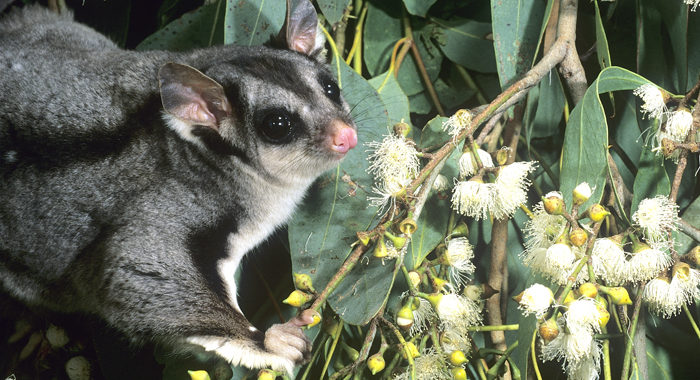
To help drive action to secure the future of Australia’s unique gliding possums, over 150 researchers, academics and on-ground practitioners from across the country came together for a two-day virtual symposium on 27 to 28 October 2020.
Run by the Great Eastern Ranges’ (GER) partner, the Biolinks Alliance, the Greater and Squirrel Glider Symposium was an opportunity for experts to share their practical and scientific knowledge for glider conservation. Speakers and panellists included Australia’s leading glider specialists including Professor David Lindenmeyer, Associate Professor Ross Goldingay and Dr Rodney Van Der Ree.
Populations of the Greater Glider, one of the world’s largest gliding mammals, have declined by 80% in just the past twenty years. Whilst the smaller Squirrel Glider is also battling the same major threats to their survival – logging, loss of hollow-bearing trees, habitat fragmentation, fire, climate change and feral animals.
“The threat of species extinction requires the sharing and application of our best knowledge, science and conservation strategy. Flagship species like the Greater Glider and Squirrel Glider are already catalysing collaboration and increased action, said Sophie Bickford, Executive Director of the Biolinks Alliance.
The recent fires raised the urgency of the challenge as well as many questions on what the best course of action is in a rapidly changing climate and more frequent catastrophic events.”
“The Glideways conference that we ran in 2016 served to galvanise local action and interest, with research and community engagement projects seeded in several locations across central Victoria. This year’s symposium aimed to inspire that same leap into action.”
The key takeaways from the symposium will help to inform the development of a national Glideways connectivity conservation plan. The Great Eastern Ranges’ Glideways program is a suite of collaborative projects to conserve gliding possums and their habitat whilst providing flow-on benefits to a host of other native wildlife with similar needs. The new plan will highlight priority areas and actions to secure the future of gliding possums across eastern Australia.
“Gliding possums are a unique and irreplaceable part of the ranges. But to date, we have been woefully ineffective at curbing the alarming decline of our gliding possums and other forest dependant wildlife,” said Gary Howling, Executive Director of GER.
It was sobering to hear researchers reflecting at the symposium on how 20 years ago, Greater Gliders used to be the most common animal they saw during spotlighting surveys. Today, this once common glider species has already become locally extinct in some areas and populations have decreased precipitously across its range. Greater Gliders have declined at a faster rate than any other mammal species in Australia, yet so few people have even heard of them. We need to ramp up our efforts to ensure that these special marsupials do not disappear forever.”
“One of the challenges we face in terms of glider conservation is the continued erosion of connectivity at all scales. This is not just habitat connectivity but the loss of connectivity between all the different activities that are being undertaken. GER Glideways seeks to link up these various actions through targeted and complementary projects in strategic locations across eastern Australia.”
The symposium was supported by major sponsor, Pool of Dreams, as well as the Great Eastern Ranges Initiative, Strathbogie Ranges, Wombat Forestcare and The RE Ross Trust.
The symposium keynote presentations and sessions are available for viewing on Youtube at www.youtube.com/channel/UCElFExskhzRDuqh88Hx-fKQ.
If you would like to get involved in GER Glideways, please get in touch.



 Article
Article